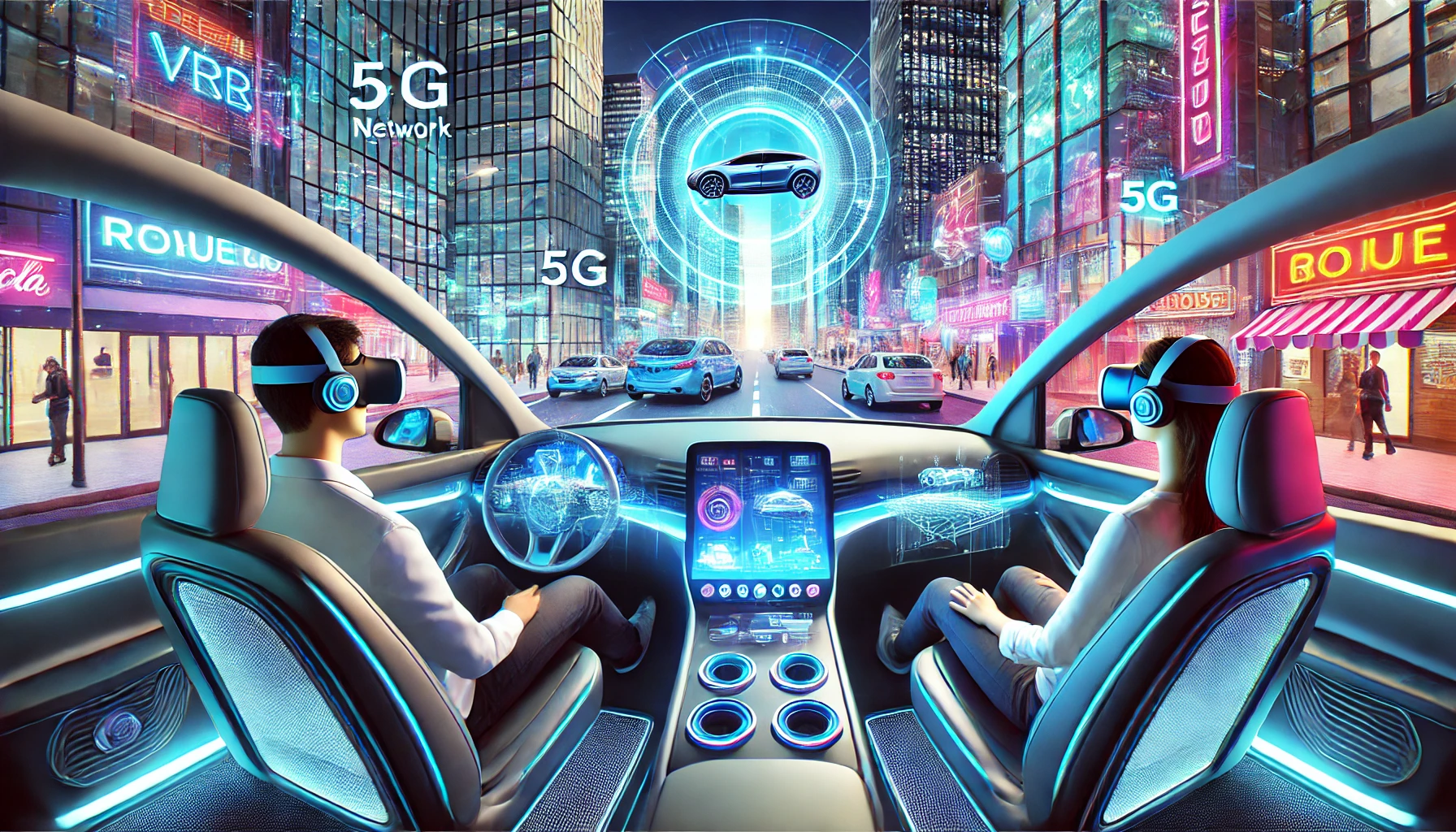Navigating the Moving Metaverse: Enhancing Immersive Media in Autonomous Vehicles
The study explores the integration of immersive media in autonomous vehicles, addressing challenges like QoE, cybersickness, and the need for standardized assessment methodologies. It highlights the potential for AVs to revolutionize in-car experiences through AR/VR technologies, demanding a multidisciplinary approach to enhance user satisfaction and safety.

A study by researchers from Gachon University, Prince Sultan University, King Saud University, Shenyang Normal University, Lebanese American University, Lovely Professional University, and University College Dublin, delves into the intersection of autonomous vehicles (AVs) and immersive media consumption. With the advent of AVs, the distinction between drivers and passengers is blurring, leading to an increased demand for in-car entertainment. The paper explores how AVs can transform into a "third living space" where passengers can engage in immersive activities such as watching VR videos and playing games.
The Rise of the Metaverse in Autonomous Vehicles
The metaverse, characterized by augmented reality (AR) and virtual reality (VR), is becoming a central aspect of social networking platforms. This evolution presents unique challenges for maintaining a high level of Quality of Experience (QoE) for immersive content in AVs. Current technologies focus on navigation and safety, requiring ubiquitous high-speed 5G/6G network connectivity for seamless streaming. However, cyber- and motion-sickness pose significant barriers to in-car VR entertainment, influenced by AV networks in different traffic conditions.
Bridging the Gap: Comprehensive Surveys and Research Landscape
The paper highlights the lack of comprehensive surveys addressing the entire process of immersive media consumption, QoE factors, and standardization in vehicular networks. To address this gap, the authors provide an overview of the research landscape concerning QoE and network standards, emphasizing the need for experimental studies to inform methodologies and recommendations for standardizing QoE assessment in AVs. They outline a framework for understanding QoE influencing factors and aspects, aiding in the adaptation, augmentation, and production of standards for immersive entertainment in autonomous vehicles.
Overcoming Challenges for a Seamless Experience
Key challenges include developing standards for immersive media QoE assessment, understanding the influence of AV networks on cybersickness, and integrating immersive experiences within AVs. The study stresses the importance of a multidisciplinary approach, combining insights from passenger/driver research, media psychology, and human-computer interaction to enhance the AV entertainment experience. The future of AVs in the context of the metaverse looks promising, with projections estimating the metaverse's value to reach 626.5 billion dollars by 2030. The integration of AR, VR, and XR technologies into the "Moving Metaverse" is expected to revolutionize in-car experiences, allowing consumers to engage with immersive content seamlessly.
Enhancing Passenger Experience in the Moving Metaverse
AVs will enable passengers to experience and engage with AR and VR content, offering numerous entertainment and communication opportunities while interacting with intelligent systems. Several factors are crucial to consider when drivers evaluate their experience during these rides; these factors could be entertainment experience, user experience, and passenger experience. This growing landscape demands a comprehensive framework that integrates insights from different research fields, including passenger/driver research, media psychology, and human-computer interaction, to better comprehend and augment this innovative driver experience. Sustaining a high QoE requires robust vehicular network connectivity and adaptability to dynamic external environments. The risk of cybersickness arises from inconsistencies between actual and perceived motion in the vehicle. This necessitates a careful assessment of human/user variability and content design to minimize discomfort.
Driving Innovation with Multidisciplinary Approaches
It is undeniable that the success of this revolutionary journey is dependent not only on overcoming obstacles such as cybersickness, content adaptability, and spatial constraints but also on vehicular networks playing a critical role. The dynamics of a moving vehicle affect the sense of presence and immersion, while spatial constraints and the need to ensure safety complicate content design even more. Providing interactive and engaging immersive experiences to users while maintaining safety poses extra challenges. Such an immersive environment necessitates multidisciplinary teamwork to address the technical challenges, design issues, and human factors involved in creating an enjoyable and safe immersive media environment within AVs. Furthermore, the influence of vehicular networks in different traffic conditions emerges as a key factor for cyber and motion sickness, less immersion and presence in a virtual environment. Novel standards from standardization bodies are required to speed up this evolution. Therefore, guidelines for conducting rigorous subjective experiments designed for the unique context of immersive media content in moving AVs need to be established. These standards will not only assist in informing the evaluation of user experiences but will also help to establish benchmarks that will drive innovation and excellence in this advancing domain.
The paper underscores the importance of a comprehensive framework for QoE evaluation of immersive media consumption in AVs, highlighting the need for standardized assessment methodologies. It calls for further research to understand and mitigate factors like cybersickness and to develop standards that ensure a high-quality immersive experience in the evolving landscape of autonomous vehicles and the metaverse.
- FIRST PUBLISHED IN:
- Devdiscourse










